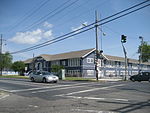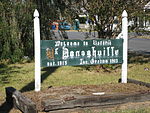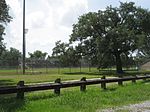L.B. Landry College and Career Preparatory High School
2013 establishments in LouisianaCharter schools in New OrleansEducational institutions established in 2013Historically segregated African-American schools in LouisianaPreparatory schools in Louisiana ... and 2 more
Public high schools in New OrleansUse mdy dates from January 2020
L.B. Landry College and Career Preparatory High School is a high school on the west bank of Orleans Parish in Algiers, New Orleans, Louisiana. The school opened in 2013 after the merger of L.B. Landry High School and O. Perry Walker College and Career Preparatory High School. It is named after Lord Beaconsfield Landry (1878–1934). The current nickname is the Charging Buccaneers, deriving from the O. Perry Walker's Chargers mascot and L.B. Landry's Buccaneers mascot.
Excerpt from the Wikipedia article L.B. Landry College and Career Preparatory High School (License: CC BY-SA 3.0, Authors).L.B. Landry College and Career Preparatory High School
Leboeuf Street, New Orleans
Geographical coordinates (GPS) Address Nearby Places Show on map
Geographical coordinates (GPS)
| Latitude | Longitude |
|---|---|
| N 29.9424227 ° | E -90.0419955 ° |
Address
Leboeuf Street 1218
70114 New Orleans
Louisiana, United States
Open on Google Maps









